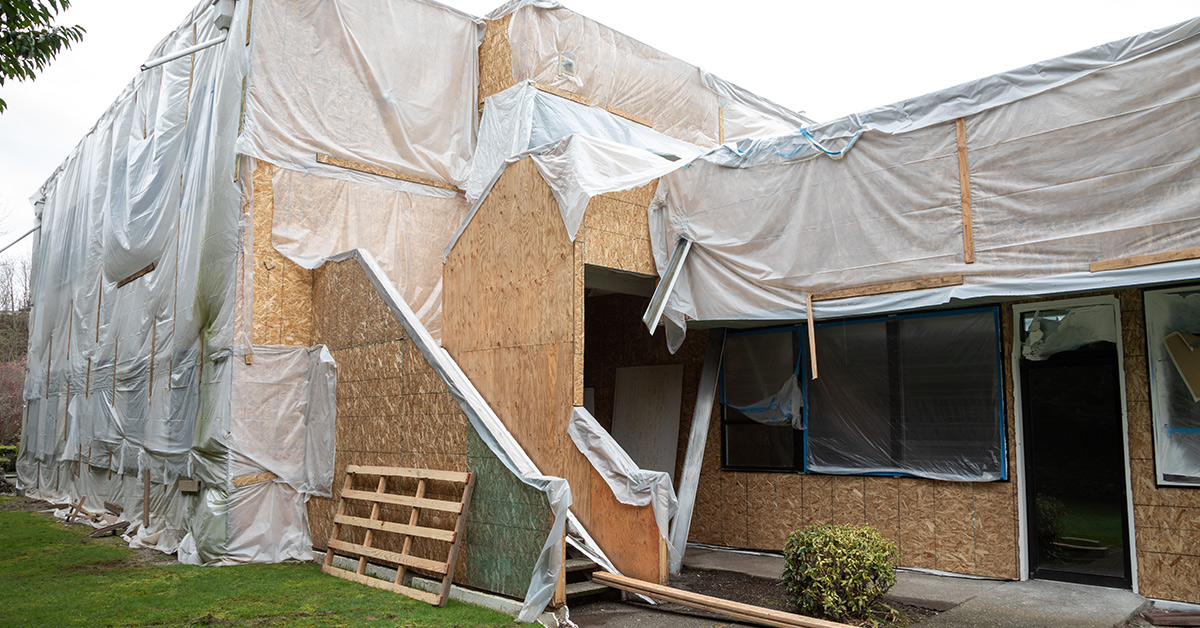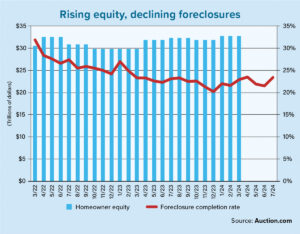With construction sites across the U.S. either dormant or slowed as the nation attempts to decrease the spread of COVID-19, the housing and mortgage industries face an ever-increasing number of disruptions to tackle in both the short and long term.
Since states began adopting stay-at-home orders early this spring, about 36.5 million Americans had filed for unemployment through mid-May. As such, it’s easy to see why residential construction projects will be taking a massive hit and, consequently, why the residential construction finance process also will be significantly disrupted.
What this means from a day-to-day perspective is that new residential construction projects and renovations are being put on hold — often indefinitely. Projects and their corresponding loans that were already up and running are facing disruption, delays and possibly even abandonment.
This has the potential to be devastating. Lenders on these projects are scrambling to ensure they can somehow work around the myriad challenges posed by COVID-19.
Meanwhile, borrowers who find themselves in sudden financial hardship are seeking assurances from their lenders — both immediately and over the long term — that they can work together to find a resolution that satisfies everyone. Mortgage originators who work with construction lenders and borrowers will want to understand the complexities and challenges facing all sides.
Imperfect environment
In a perfect environment where one or two projects may be delayed, lenders, contractors and borrowers will work together to either get the project done on time or seek a loan extension. In the current environment, however, it’s completely different.
The contractor, for example, can’t be pushed in an effort to overcome the delay. Some contractors couldn’t be on site this past spring. Others were allowed to work but social distancing on the job site slowed construction.
This puts all parties in a difficult situation. Lenders are obviously finding themselves with multiple loans in their portfolios that are facing potentially crippling delays. Borrowers are suddenly staring down longer loan terms than they committed to, or worse, an inability to repay the loan for the foreseeable future.
If the market is trending down and home values are declining, that’s going to affect how loans are underwritten, and lenders are more likely to have mortgages in their portfolios worth more than the value of the property being funded. Continuing down this path, lenders will have granted loans for projects that can’t be finished. When the projects finally do get done, the loans won’t be able to be sold to government agencies and could stay on the lender’s books.
Join 210,000 mortgage professionals
Get the news, trends and industry updates in your inbox to become a better mortgage originator. Subscribe to emails below.
Stringent requirements
Compounding this, prospective borrowers that had been planning a renovation project are going to face a more challenging borrowing process. Lenders are now offering fewer products and qualifying will be more stringent now that financial hardship is setting in for many people.
For example, will lenders adjust their qualification requirements if a borrower was supposed to be employed for the past two years? Clearly, there will be a large number of potential residential construction borrowers over the next two years who are now unemployed. Lenders will have to look at employment history in a new light and determine what they’re prepared to overlook given the state the economy will be in during the coming months and years.
Of course, the disruption related to COVID-19 depends on the types of loans — and how many of each type — a lender keeps on its books. There may be a number of significantly stronger loans, such as those where the borrower has a substantial amount of cash and is financially strong enough to continue building when construction activities are allowed to start up again.
On the flip side, there are mortgage products that are 100% financed in which the borrower has no liquidity in the bank, and they’ve lost their job and are trying to make two mortgage payments — one on their own home and one for a project that has most likely been extended, or worse, abandoned. Will lenders begin to foreclose on these types of loans? Lenders don’t want loans on their books for assets they can’t sell in a downturn.
Significant disruptions
It’s clear that the residential construction finance process is facing significant disruption from COVID-19. Although there are no clear answers for how to navigate the situation, all parties, including mortgage originators, must work to forge a path forward and prevent this disruption from becoming a catastrophe.
Communication is obviously key across the entire industry. Struggling borrowers must ensure they talk to their lenders and contractors about their situation in order to try and find a mutually agreeable path forward. Meanwhile, lenders should be contacting each borrower to ascertain their situation.
Lenders also should keep a close eye on the cities, counties and states that have deemed construction an essential business. This way, they can understand which regions are more likely to have dormant projects and which regions may still have projects moving ahead (depending, of course, on borrower circumstances).
Most importantly, lenders must create a road map for the next 12 to 24 months to address the variety of scenarios they may find themselves facing and the steps for managing each one. This road map must be fluid and address all of the challenges a lender is currently facing or likely to face — including non-performing loans, abandoned projects and the impact of an elongated shutdown — and it should include strategies to tackle each scenario.
Although this is uncharted territory, the mortgage and housing industries must work to be in the best possible position to tackle the ongoing effects of this crisis. This way, when the economy fully opens up and money starts to flow again, these industries will have a blueprint to face whatever scenario occurs and deal with the challenges presented. •
Author
-
Natalie Myrick is the director of mortgage solutions at Built Technologies. She is responsible for helping lenders, builders and borrowers, primarily on the residential side, improve the construction lending process. Prior to joining Built, Myrick was the vice president of home lending construction and systems manager at Umpqua Bank. Myrick has a master’s degree in accounting from the University of Phoenix and a bachelor’s degree in managerial accounting from Kaplan University.





